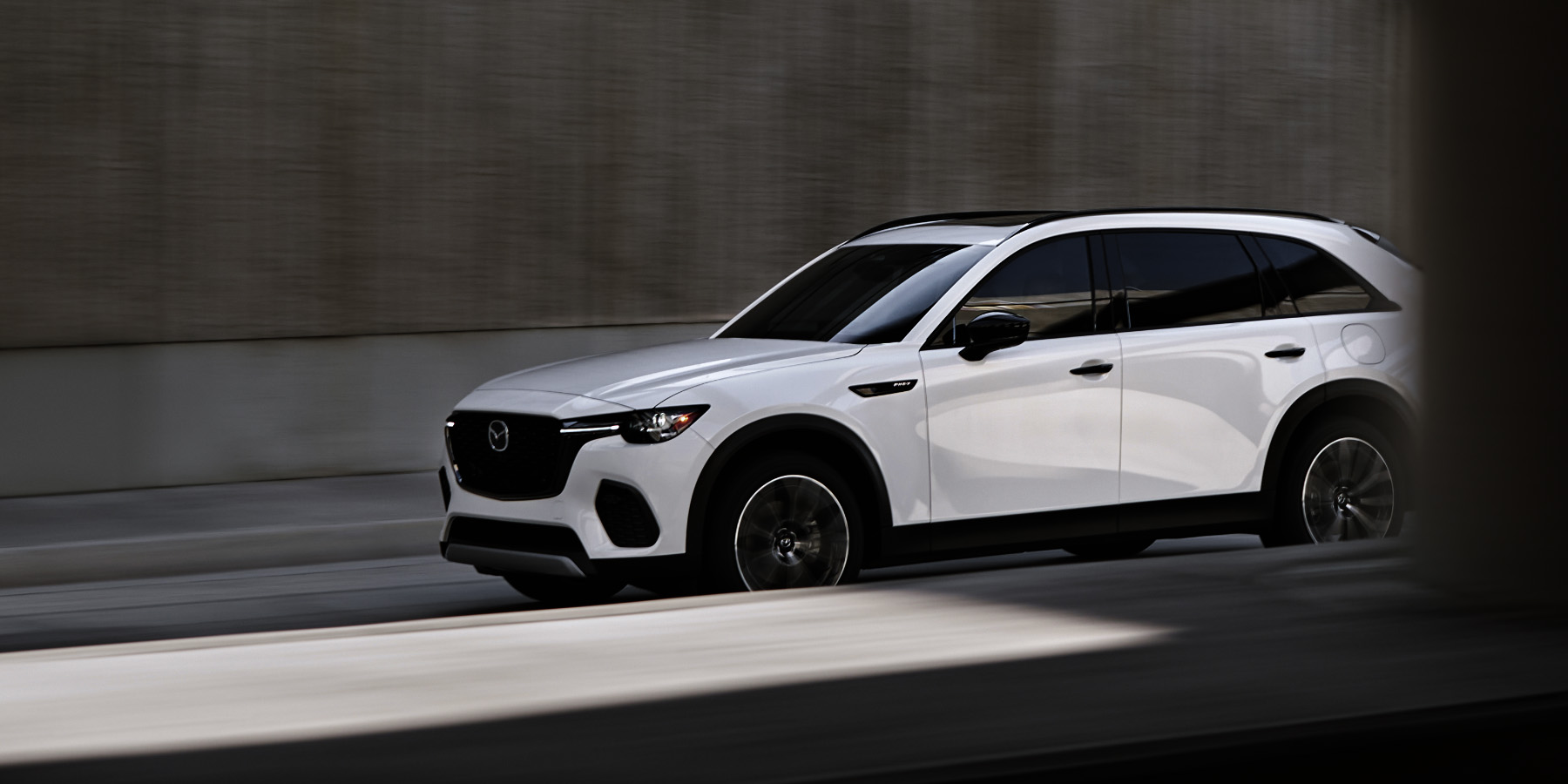What Is Automatic Emergency Braking (AEB)?
AEB technology uses sensors to monitor for an impending collision and, if the driver takes no action, can apply the brakes.

Automatic emergency braking is a system that uses various sensors to detect an impending collision and, if the driver takes no (or not enough) action, can apply the brakes to avoid or decrease the severity of a collision.
Also known as crash imminent or collision mitigation braking, and various manufacturers’ own names (such as the Mazda Smart Brake Support), AEB has already prevalent in the market as a result of a voluntary automaker commitment to equip 95% of all vehicles with the lifesaving technology by 2022. AEB meeting higher performance standards may become mandatory for both passenger vehicles and heavy trucks and buses over the next few years, according to rules proposed in mid-2023 by the National Highway Traffic Safety Administration (NHTSA).
Here’s what you need to know about this braking system that can help save lives on the road.
How does automatic emergency braking work?
An AEB system employs cameras and sensors, most commonly radar-based, to detect objects, moving or stationary, outside a vehicle.
Onboard software correlates data from those sensors with data provided by the car — including but not limited to speed, rate of acceleration/deceleration, and position and rate of movement of the brake pedal, accelerator pedal, and steering wheel — to determine if it deems a collision may be likely.
The system can emit a warning, which may be visual, audible, and/or tactile — such as a vibrating seat or steering wheel — and if the driver does not immediately respond by steering to avoid the object or by applying brakes, the car can apply the brakes automatically.
AEB systems can react within fractions of a second; they require no driver action to function. Some AEB systems can be turned off manually and/or be adjusted for sensitivity. The speeds at which AEB operates vary by make and model.
Smart Brake Support features are not a substitute for safe and attentive driving. There are limitations to the operation of the system. Please see your Owner’s Manual for further details.
Types of automatic emergency braking
All AEB systems work similarly, but there are a few notable categories.
Low-speed AEB
Some AEB systems are designed primarily for urban use, typically between speeds of 2-3 mph (walking speeds) to 50 mph. Mazda's Advanced Smart City Brake Support, available on the Mazda CX-5, is one such system.
Smart Brake Support features are not a substitute for safe and attentive driving. There are limitations to the operation of the system. Please see your Owner’s Manual for further details.
High-speed AEB
These systems operate from walking speed up to highway speeds, for example, the Smart Brake Support offered by Mazda.
Smart Brake Support features are not a substitute for safe and attentive driving. There are limitations to the operation of the system. Please see your Owner’s Manual for further details.
AEB with pedestrian and cycling detection (AEB-ped)
These AEB systems help detect objects such as pedestrians, animals, and cyclists. The Mazda CX-5 Smart Brake Support is one example of such a system.
Smart Brake Support features are not a substitute for safe and attentive driving. There are limitations to the operation of the system. Please see your Owner’s Manual for further details.
Rear AEB (AEB-rear)
This system detects objects when moving in reverse, generally at lower speeds, when backing out of a driveway or parking spot. The Mazda CX-5 is available with Smart Brake Support Reverse.
Smart Brake Support features are not a substitute for safe and attentive driving. There are limitations to the operation of the system. Please see your Owner’s Manual for further details.
Automatic Emergency Braking FAQS
-
Data from the IIHS shows passenger vehicles equipped with AEB systems as having lower rates of collisions, injuries, and property damage, in some cases by more than 50%. Similar findings have emerged from a novel data sharing partnership between the US Department of Transportation and automakers including Mazda, which can be seen here. However, no driver assist system is perfect; an attentive driver is the most important factor when it comes to vehicle safety.
-
AEB operation can be affected when sensors are covered or obscured by precipitation, spray, or foreign material. Situations that may trigger “false positives” include oncoming or parked vehicles along a bend, heavy shadows on a bright day, metal road signs, and mid-bend or steep road angles (like a downhill hairpin or steep parking garage ramp). Rear AEB may be triggered in close proximity to a narrow driveway wall or hedge, mailbox, or trash can. Like any technology, AEB can also suffer issues with wiring or software.
For example, NHTSA is investigating reports of 18 false positives in Freightliner Cascadia trucks equipped with AEB. Despite this, NHTSA has projected that, once implemented within all passenger vehicles, AEB systems would save at least 360 lives a year and reduce injuries by at least 24,000 annually. These numbers go up with implementation across trucks and other heavy vehicles.
-
AEB can typically be switched off, and object sensitivity detection may be adjustable depending on the make and model of your vehicle. In most cases, there is a simple defeat switch, or you may be able to turn off the AEB in the settings or vehicle menu in a central controller (like Mazda Connect™). As always, it’s best to refer to your Owner’s Manual or talk to a dealer for specifics about your vehicle.
-
ABS, or Anti-Lock Brake System avoids wheel lock-up under emergency braking conditions, allowing the driver to maintain more control over steering and the vehicle. ABS may help the driver stop over less distance in adverse braking situations, but its main purpose is to help drivers maintain steering control while braking.
AEB is an automatic detection and braking system that can help drivers avoid collisions or reduce the severity of a collision. Engagement of AEB can trigger ABS operation, especially when road conditions are wet, but the reverse is not true.

AEB systems at Mazda
Every 2024 Mazda, from the Mazda3 Sedan to the CX-90 PHEV, come with standard Smart Brake Support, Mazda’s forward direction automatic emergency braking system. Some models offer rear AEB as well.
Learn more about the Mazda dedication to safety and explore all safety features in our new vehicles when you shop online or visit a local Mazda Dealer near you
This article is intended for general informational purposes only and is based on the latest competitive information available at the time of posting. Information herein is subject to change without notice and without Mazda incurring any obligations. Please review a variety of resources prior to making a purchasing decision. Visit Resource Center for more articles.




















